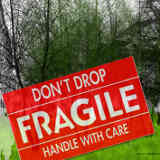10 day Erasmus Intensive Programme Student Workshop
Virtual spaces have become a major economic growth factor in many contexts. As a consequence, the design of experiential rooms opens up new opportunities to architects for work and employment on aesthetical and concept design of these virtual environments. Contemporary society demands flexible urban and architectural responds. Continuation of DIVE programmes addresses new contexts, new social and urban structures and new patterns which are avoiding the established concepts about scale and physicality.
Bringing the trilogy of DIVEs together it is time to address one of the elusive issues: "bridging the gap between physical and virtual".
A decade ago the informational era has shown glimpses of what the future might hold for us a unified and continuos world without divisions between physical and virtual envrionments. Couple of years later we are nowhere near that vision. What do we have to do to to bridge the gap? And are we still the believers? The IP is setting off in the direction of bridging the gap between physical and virtual, asking questions of what do we need to do, in which direction we have to act, and how can we connect the separate entities into one unified whole, not forgeting the achievements of recent DIVE IPs crossing scales and humanization of virtual environments - on the way.
Conecting the physical and virtual environments has proven elusive and undefined at best. The questions still remain: can we move beyond mere prototypes and concepts? Can we omit the word imagine and if and just make the transition from physical to virtual as real as we want it to be? What is phyisical and what is real, where are the boundaries, what defines them and can we bridge them? What does all that means for the users? Is the transition as smooth as they would hope it can be? Should they be aware of it or not? Is it possible and plaussible at all? How do the identity, culture and other means play the part in unifiying digital and physical worlds?

